A few weeks ago I purchased a Kindle 2 - the electronic book reader from Amazon.com. Janelle has had the Kindle 1 for over a year and she really loves it - I figured it was time for me to get one.

Sweet: the new Kindle 2 from Amazon
Update: I returned my Kindle 2 and ordered the Kindle DX
In addition to books, newspapers and magazines, you can also subscribe to your favorite blogs on your Kindle. New articles from your favorite blogs (or newspapers/magazines) are automatically transferred to your Kindle wirelessly through "Whispernet", the EVDO/3G high-speed data network Sprint has setup for Amazon. Most network connection fees are included in the price of the Kindle, in other words you don't pay anything to transfer.
That said, I found that Amazon charges a pretty high price for such subscriptions. For example: I frequently check out www.politico.com for political news; Amazon charges $5.99/month to get content from Politico.com on my Kindle:

$5.99/month for something I can get for free online? Really Amazon?
I looked for a better way to get my RSS feeds on my Kindle and fount it: www.kindlefeeder.com and "Kindle Feeds". Daniel Choi (www.danielchoi.com), a talented developer has created kindlefeeder.com, a website that delivers your favorite feeds to your Kindle:

http://kindlefeeder.com/: free up to 12 RSS feeds, also lets you schedule automatic deliveries.
If you only need to have up to 12 RSS feeds/subscriptions delivered to your Kindle, just use www.kindlefeeder.com; there's also an unlimited service where for $5/month you can subscribe to an unlimited number of feeds.
If you'd like more control or you're a technical geek who has fun doing this stuff, Daniel Choi also made available "Kindle Feeds", an application that runs on your computer:
Daniel has instructions on how to install and run Kindle Feeds on a Mac, so I thought I'd try to see if I could get it running on Windows. I was successful, and below you can find instructions on how to download, install, configure and run Kindle Feeds on Windows.
Read your favorite RSS feeds on your Kindle
Installing and running "Kindle Feeds" on Windows
The instructions below where tested on Windows Vista, Windows Server 2008, and Windows 7 (RC); that said it should also work fine on Windows XP.
Step 1 - Download Installers
The first step is to download the necessary installers. Although you don't really need it, I suggest you download the Kindle Feeds package (you may need it some day and it might not easily be available online).
1a - Download Kindle Feeds v1.0.6 (or higher if available)
You can download Kindle Feeds here:

Save what you download to a local folder. For example in Windows, I saved all of the packages in C:\Users\ehuna\Downloads\kindle-feeds
You don’t really need this package unless you want to look at the source code. But I don’t know if Kindle-Feeds will be available in the future, so I suggest you make a copy for yourself.
1b - Download Ruby for Windows
Kindle Feeds needs was written in Ruby - so you'll need to download Ruby for Windows. You can get the installer here:
If you are using Firefox, you should see the following packages now downloaded:
The packages should now be available on your local drive:
Step 2 - Installation
Double click on ruby186-26.exe and the installer will start:
I won't show all of the installation steps, but an important step is the location where you're installing Ruby - you'll need to remember that. In my example, I installed under "C:\WinUtil\Ruby":
Click on Next a few times and the Ruby installation will start - you'll see a progress dialog like the one below:
After a few moments, the Ruby installation will complete – click ‘Next’:
At this point, I knew Kindle-Feeds had some pre-requisites that needed to be installed. I researched it a bit and opened the file below – noticing the required packages:
To install the pre-requisites, start and command line window. In Vista and Windows 7, click on Start > type “cmd”, then right-click and choose “Run as administrator:
Once the command line window opens (make sure the window title starts with “Administrator”), type “cd \WinUtil\ruby”. If you type “set”, you can then also check that Ruby was properly installed by checking for example the value of the environment value “RUBYOPT”:
You then need to type the following commands, one after the other (this can be done from any folder, for example I just ran them from “C:\windows\system32”):
gem install feed-normalizer
Then type:
gem install hpricot
Finally type:
gem install kindle-feeds
Step 3 - Kindle-Feeds Configuration
Next we need to configure Kindle-Feeds. First we create a folder where you will generate your kindle-feeds files. I did this in c:\users\public\documents\KindleFeeds.
Then in a command line window, go into that directory and run kindle-feeds by typing “kindle-feeds”:
When you run kindle-feeds for the first time, it will generate its configuration file named “kindle_feeds.conf”:
Next you need to edit this file – use Notepad or your favorite text editor. In this case, I used the free Notepad++:
You can edit this file to contain the feeds and sections you want. When you’re done editing, save the file.
If you don’t have any feeds yet, I suggest two applications that can get you started -
Google Reader
http://www.google.com/reader/
Google reader is my favorite RSS reader – where I centralize all of my RSS subscriptions:
If you have a tech friend who uses Google Reader you can also ask them to create a introductory bundle for you.
Another great addition to my experience with RSS feeds is an add-on for Firefox, called “Feedly” – you can find it at http://www.feedly.com/. It basically reads the feeds you’ve subscribed to in Google Reader and Twitter and “weaves your favorite content into a fun, magazine-like start page”:
Once you know which feeds you’d like to read on your Kindle, add them to the kindle_feeds.conf file – here are some of the feeds I regularly read:
Now you can download feeds and generate your a kindle-feeds document.
Step 4 - Run kindle-feeds
Now you can download feeds and generate your a kindle-feeds document. In a command line window, type “kindle-feeds”:
kindle-feeds will then fetch the content from your RSS feeds and give you some some feedback as it prepares the document for your Kindle:
Finally, you’ll see a file created, in my example below, “Kindle Feeds 04-08-2009.html”:
Step 5 - Email HTML Attachment
The next step is to send the generated HTML document to your Kindle.
Note: Amazon charges 10 cents per MB when you email a document to your kindle for wireless delivery. The 10 cents fee is waived if you transfer the document through USB. See this help page from Amazon for more details.
You can use your favorite email client, in my case Gmail (http://gmail.google.com).
Send the email to YOUR_KINDLE_USERNAME@kindle.com (replace “YOUR_KINDLE_USERNAME” typically with the username you use to login at Amazon.com:
Make sure you add the generated HTML document (“Kindle Feeds 04-08-2009.html”) as an attachment:
In Gmail we get some feedback when the attachment has been uploaded to Google’s servers and is ready to be sent. Click on “Send”:
Make sure your email client has sent the message – in Gmail you can see this at the top (“Your message has been sent”):
Daniel Choi has some more information on this process:
Depending on whether you send the file to your @kindle.com or @free.kindle.com address, the final document will be delivered wirelessly to your Kindle or sent back in processed form via email for you to transfer manually over to your Kindle via USB. Check out Amazon’s help page for detailed instructions.
To run kindle-feeds again, all you have to do is open a Terminal window, cd into your Kindle Feeds directory, and run kindle-feeds again. The program will read your feeds list in kindle_feeds.conf every time it runs and generate a new “Kindle Feeds MM-DD-YYYY.html” document each time using the latest feed content.
Step 6 - Read your RSS feeds on your Kindle!
On your Kindle, make sure you have wireless turned on. After a few moments, you should see a new document in your home page, containing your kindle-feeds. Here are some screenshots from Daniel Choi’s site:
Step 7 – Automation
Once again, Daniel Choi has properly described a possible automation process, so I’ll just steal his description:
If you’re a programmer, it’s possible of course to automate this process with cron so that it runs every day automatically and sends the generated output to your kindle user email account for wireless delivery to your Kindle. That works out to $3 a month to peruse my favorite feeds on my Kindle without having to resort to the very slow Web Browser mode, which to me is not a bad deal.
On Windows, instead of cron, you can use Blat, a free utility to email files from the command line in association with the Windows Task Scheduler (here’s a tutorial).
Sweet – one more reason to enjoy your Kindle.









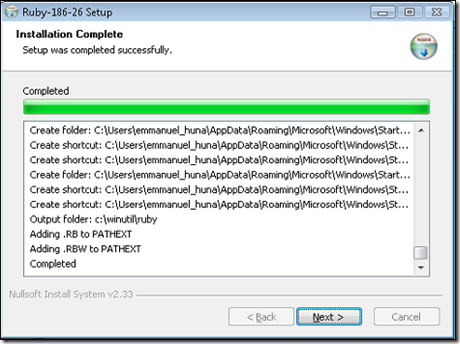



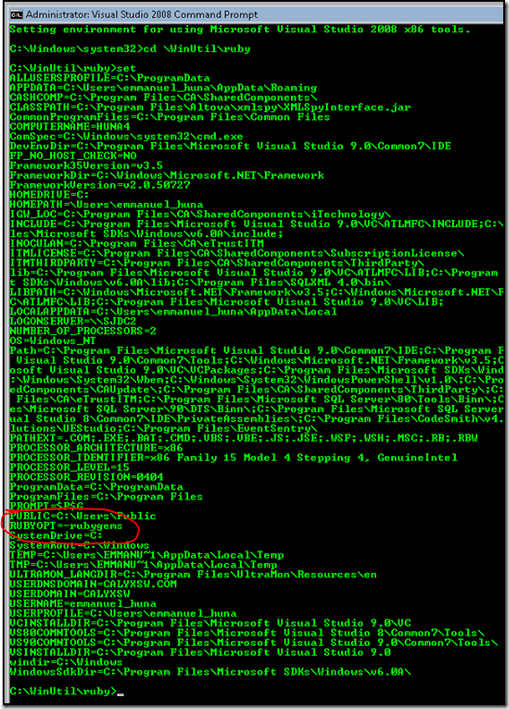
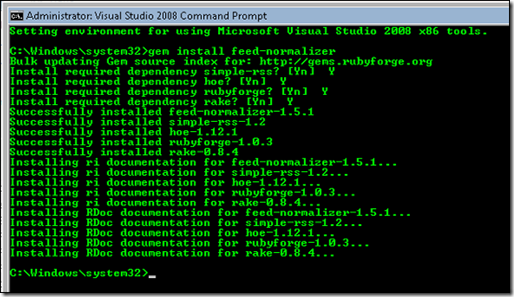


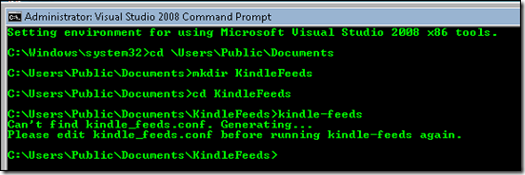

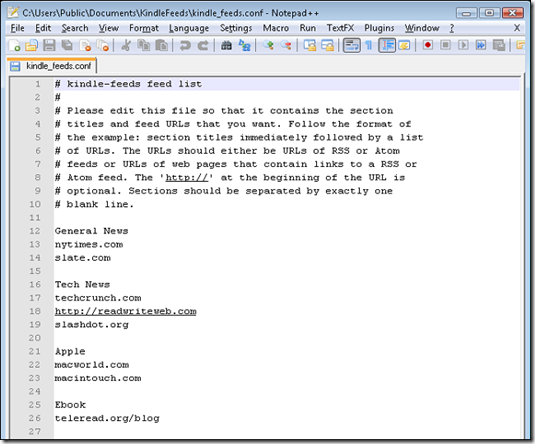

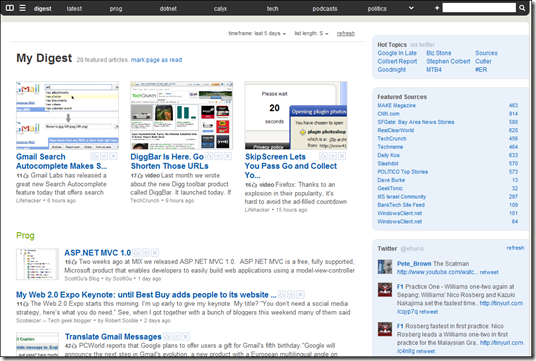













Comments